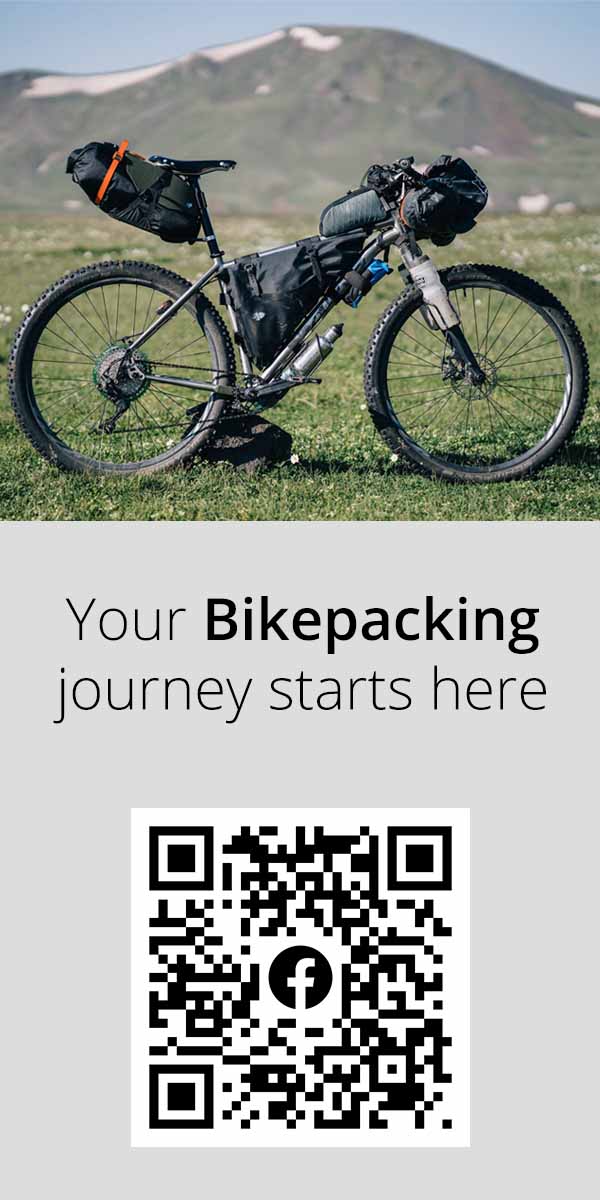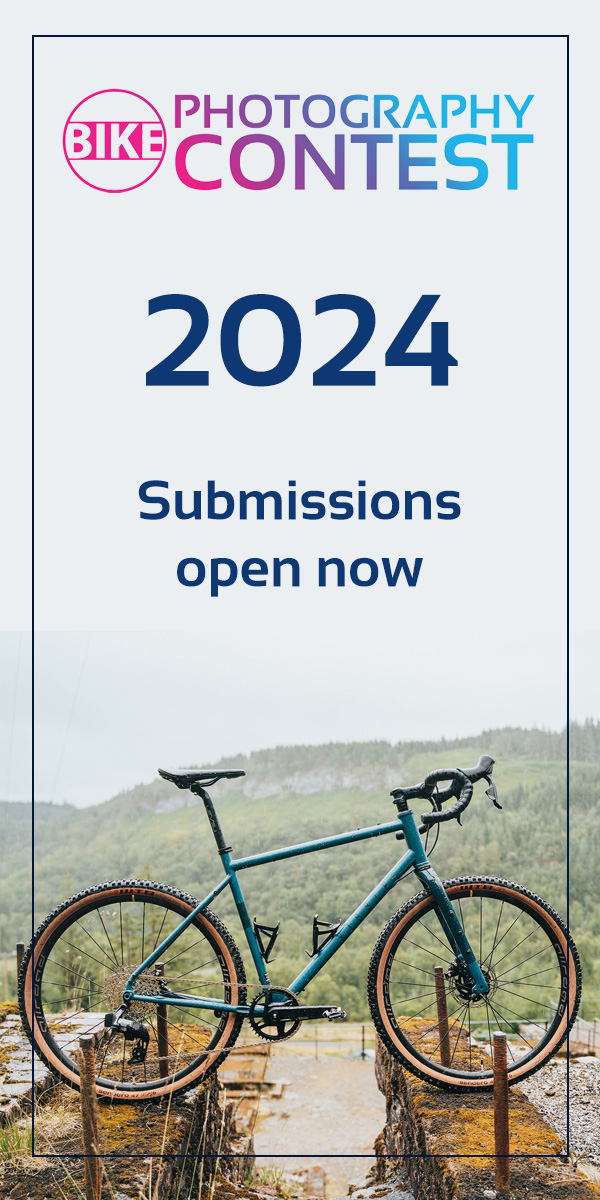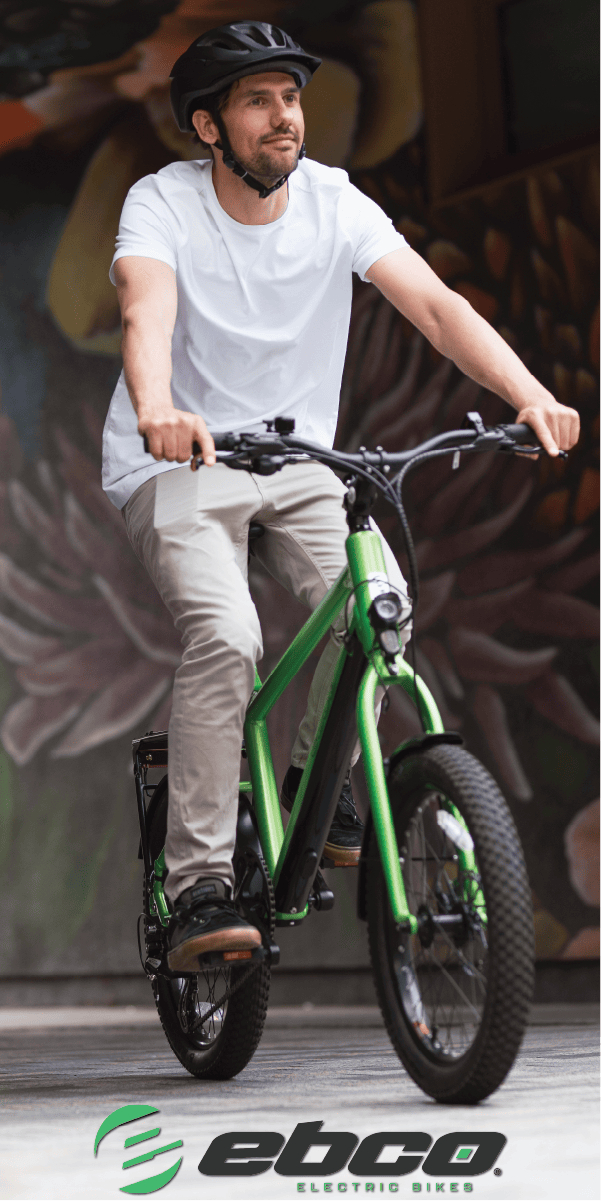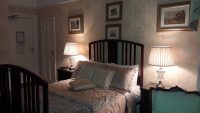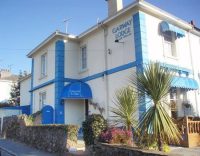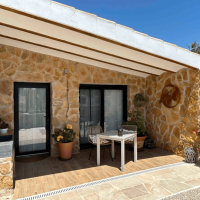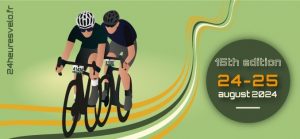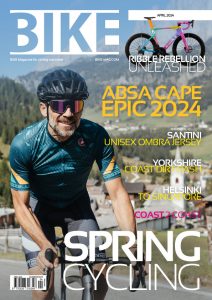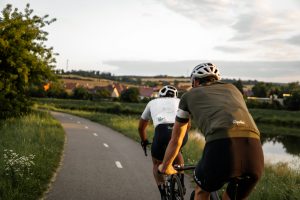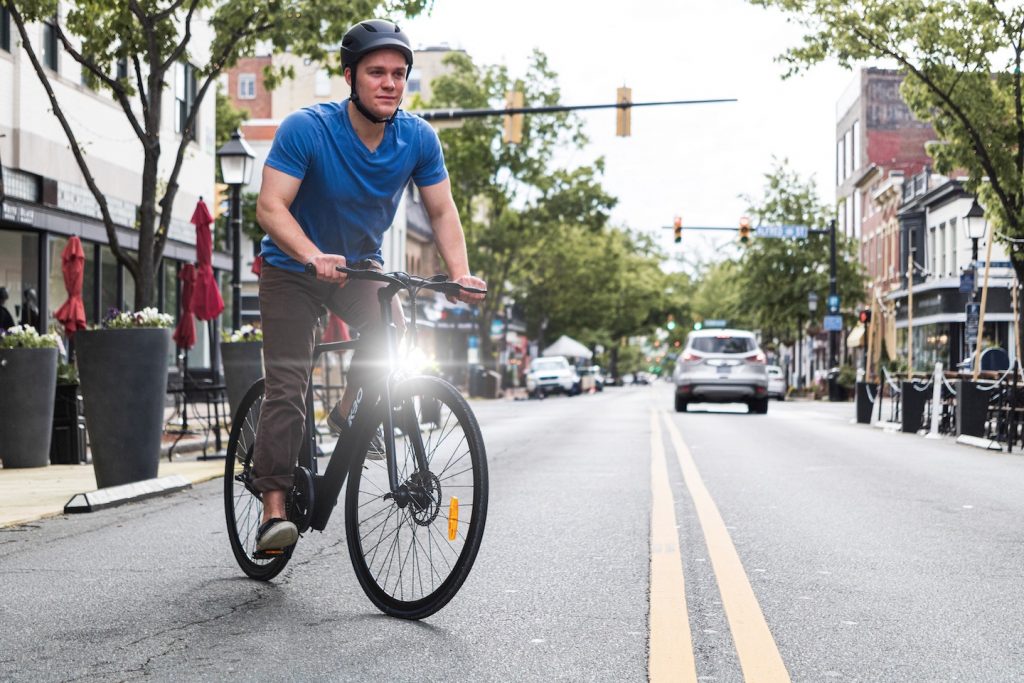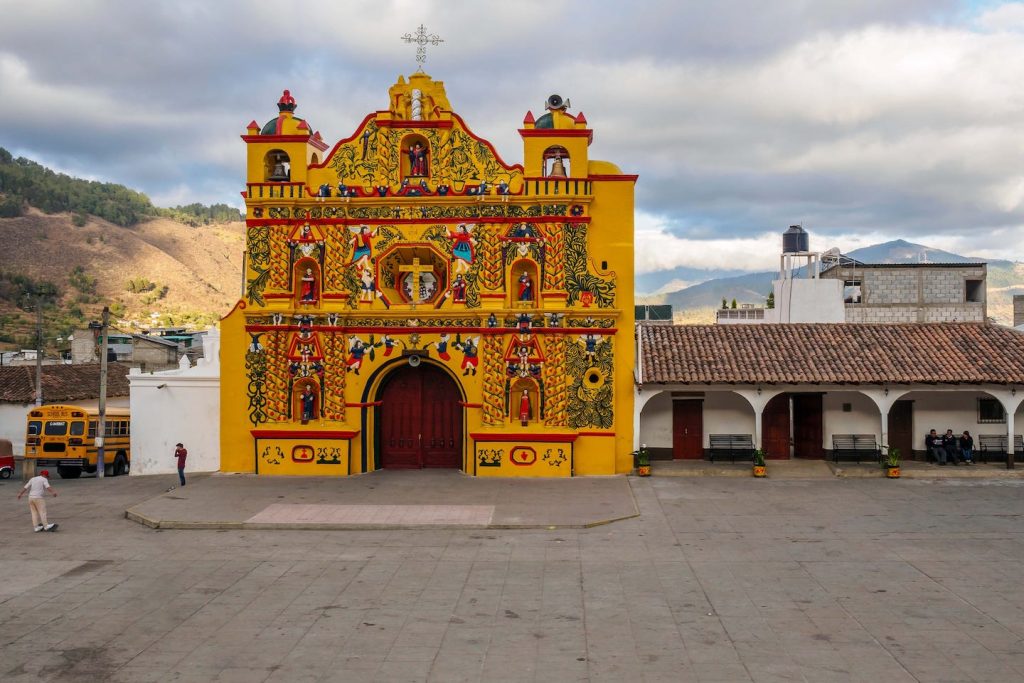I knew the time would come when I would eventually travel to Amsterdam and jump on a bicycle, the city is synonymous with the bike, around every corner and in every crevice it breathes bikes. It’s a cyclist’s spiritual home, a temple to all things two wheeled.
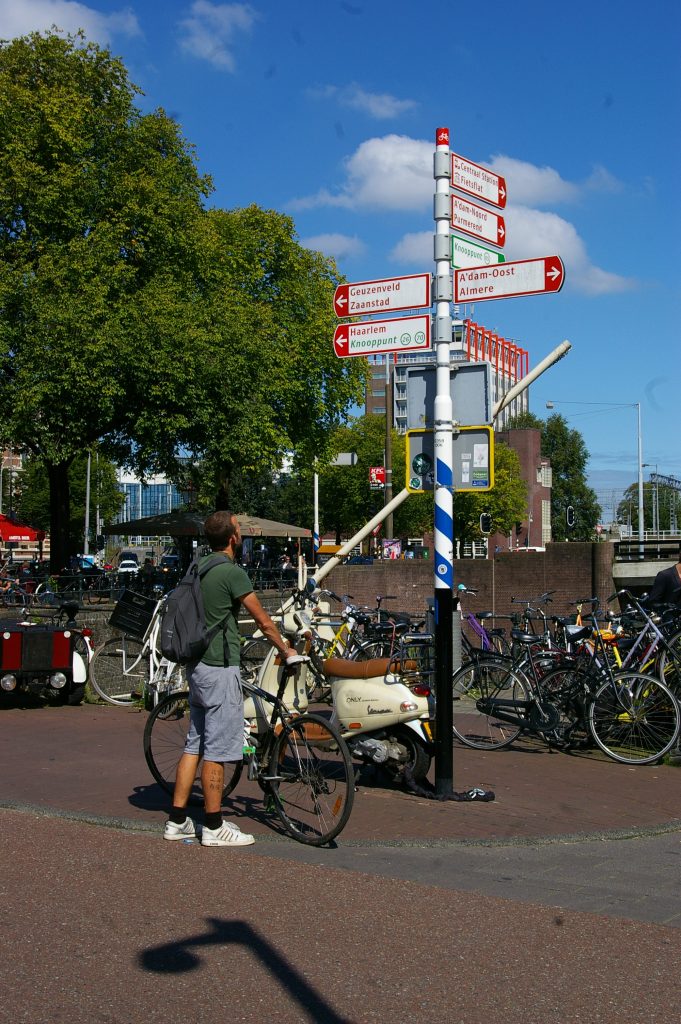 My hope was to experience a bike utopia but my apprehension was evident as we boarded the Stena Line service from Harwich to the Hook of Holland. My concern was that my impression of the city as a laid-back, welcoming and tolerant place might just be a figment of my always positive imagination. I have always loved the idea of Amsterdam; its pragmatism is by far its greatest attraction. The Dutch had the first homosexual marriage, the red light district is regularly visited by families and it’s synonymous with its relaxed approach to drugs, which infuriates most because in reality the liberal drugs policy hasn’t actually seen an increase in drug use. The plan was simple, immerse in all that Amsterdam had to offer, stunning museums, contemporary galleries, an intricate network of canals and vibrant nightlife. I couldn’t wait!
My hope was to experience a bike utopia but my apprehension was evident as we boarded the Stena Line service from Harwich to the Hook of Holland. My concern was that my impression of the city as a laid-back, welcoming and tolerant place might just be a figment of my always positive imagination. I have always loved the idea of Amsterdam; its pragmatism is by far its greatest attraction. The Dutch had the first homosexual marriage, the red light district is regularly visited by families and it’s synonymous with its relaxed approach to drugs, which infuriates most because in reality the liberal drugs policy hasn’t actually seen an increase in drug use. The plan was simple, immerse in all that Amsterdam had to offer, stunning museums, contemporary galleries, an intricate network of canals and vibrant nightlife. I couldn’t wait!
The ferry was to be our rather romantic base for the night, not me and my bike but me and my wife (who was my official photographer for the duration). The cabin was bigger than I was expecting and we slept relatively well considering we were at sea. Over a delicious dinner the night previous I interestingly read that to behave like the native Amsterdammers I should be on the constant look out for Gezellig which is fundamentally about creating an environment that allows good times to happen.
On the agenda would have to be an obligatory visit to one of the many independent cafes. There are an abundance of these infamous establishments dotted throughout the city, café-clubs, café-pubs and café-bars. Our base was on the Spuistraat with beautiful views of the Singel Canal. On the cusp of the Jordaan area, it is a mass of grandiose canal houses decorated with vibrant summer blooms. It was originally a working class area, home to the stone masons and construction workers, wonderfully laidback and welcoming. Around every corner is concealed greenery, a secret verdant hideaway discreetly enjoying the rays of the sun. A flourishing art scene, artisan shops, modern boutique hotels and a plethora of enticing cafes and restaurants have transformed the Jordaan into a dynamic and affluent neighbourhood. The city canals celebrated 400 years last year and the old canal system forms a wonderfully intricate semi-circle around the medieval part of the city, creating a harmonious blend of cutting edge design and simple naive beauty.
The city’s architecture is dominated by gables, in spout, step, neck and bell styles. The opulent houses which enjoy glorious vistas of the canals impress not so much with their size but with their overall distinguishing features and character. The vibrant colours and welcoming facades of these predominately private dwellings gives Amsterdam a wealth of architectural marvels unsurpassable by no other city in Europe. I love taking photographs; they provide a unique portal to understand a place. What we often don’t see initially becomes clear when you take the time to look and linger. The vivid colours of a building, the mundane enhanced by a simple action, the understated beauty of a fleeting moment of reality. Amsterdam’s cityscape is the ideal canvas, full of visual clichés providing a contemporary mixture of chaotic movement and relaxing stillness provided by the bike, the water and the sun shaded back streets.
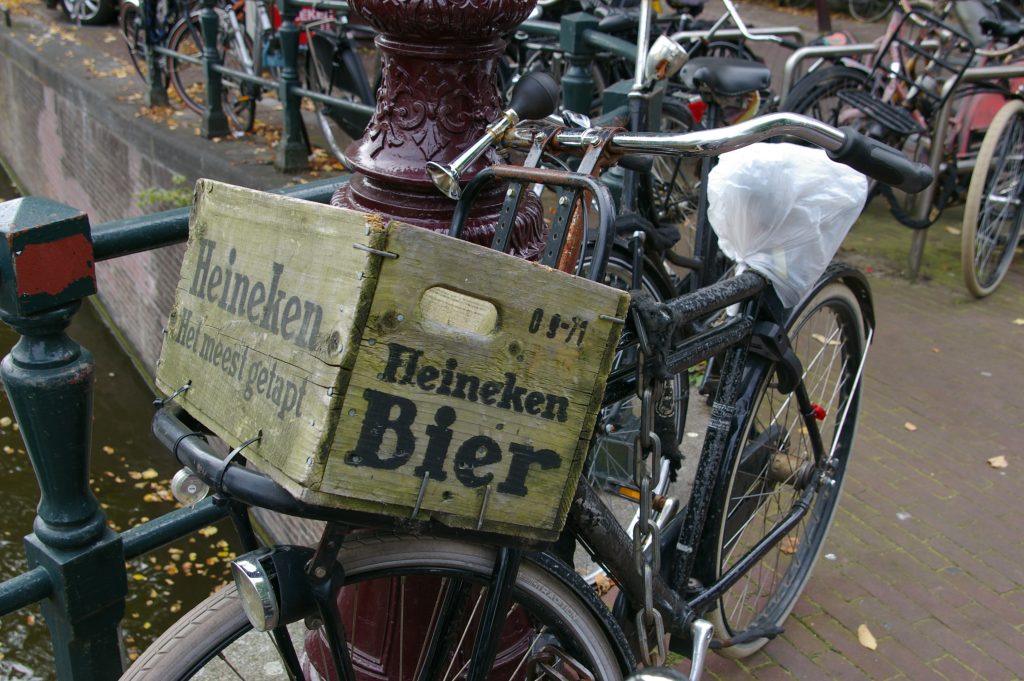 My first venture out on the bike took me to the southern part of the city. The bike is definitely the best option to explore, especially the canal belt. However, a word of caution, there is a recognised problem with bike theft. There are plenty of bicycle rental outlets dotted throughout which are happy to organise tours and assist with cycle maps, as well as the obvious bike hire. Crazy cycling is accepted, actually it appears it is encouraged. Bikes zipping along tram lanes, cycle paths, pavements, the constant din of the overused bell foreboding danger. They have been described as the ‘Silent Killers’ and at times I nearly succumbed in a blur of pedal power. It’s not about speed, it’s about the history and affiliation the city has with the bike and its legacy. The bike is most definitely King, long live the King!
My first venture out on the bike took me to the southern part of the city. The bike is definitely the best option to explore, especially the canal belt. However, a word of caution, there is a recognised problem with bike theft. There are plenty of bicycle rental outlets dotted throughout which are happy to organise tours and assist with cycle maps, as well as the obvious bike hire. Crazy cycling is accepted, actually it appears it is encouraged. Bikes zipping along tram lanes, cycle paths, pavements, the constant din of the overused bell foreboding danger. They have been described as the ‘Silent Killers’ and at times I nearly succumbed in a blur of pedal power. It’s not about speed, it’s about the history and affiliation the city has with the bike and its legacy. The bike is most definitely King, long live the King!
After negotiating the trams and constant stream of cyclists, I arrived in front of the ornate gates of the Vondelpark which is the most famous of the City’s parks. It offers an abundance of ponds, gardens and glorious tracks and footpaths. I halted by the memorial, the sun was strong and the shade was at a premium. The facts and numbers on cycling in the city are astonishing and definitely something the UK should aspire to. There are an estimated 881,000 bikes and 58% of Amsterdammers use their bikes daily. In comparison there are only 263,000 cars with 37% movement of traffic being by car and 38% by bicycle. The maze of cycle paths total 400km, it’s definitely a city that’s completely dominated by all things two wheeled. Cycling was accepted as the main method of navigating the city in the country’s pre-World War II days and even played a role during the Nazi occupation of the city in the 1940s. It’s believed the German hated Amsterdam cyclists with their blaise attitude full of bravado and anarchy. The locals purposely slowed up convoys and refused to give way to German vehicles. It gave the locals the opportunity to display their dissatisfaction towards the invaders and hinder their cause.
From the greenery I pedalled on towards the city’s cultural heart. Once home to a stinky wax candle factory and marshy meadows, the Museum Quarter has been transformed into the City’s most affluent area. Home to the Riksmuseum, Stedelijk Museum, Van Gogh Museum and a diverse array of boutique outlets and specialist artisan shops, which would adequately fuel any shopping spree.
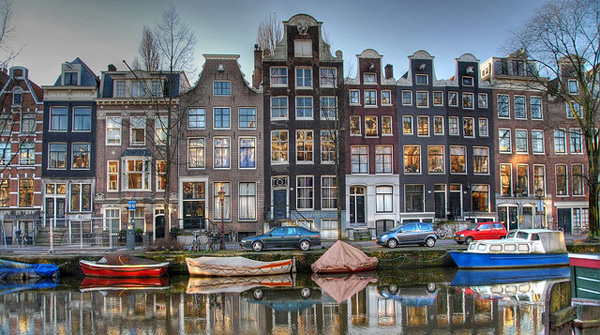 The Rijksmusuem is massive and is believed to house over one million objects. Its stunning ornate façade is best enjoyed from the peaceful serenity of the expertly manicured gardens opposite, the only sound was the sporadic rush of water from the contemporary water feature set in the heart of the greenery. As we approached the entrance I noticed several cyclists emerge from the interior. Amazingly a bicycle path has allowed pedestrians and cyclists a shortcut across the city ever since the museum was built. The path is in a tunnel, separating galleries and proving a nuisance to curators, but offering a unique opportunity for Amsterdam’s cycle-loving citizens. However whilst the museum was closed for renovation there were calls for its permanent closure, the Rijksmuseum arguing it was a hazard to its visitors. At one point there was a chance the city might have to hold a referendum before the City Council jumped in and decided it would stay. Vigilance and compromise is key.
The Rijksmusuem is massive and is believed to house over one million objects. Its stunning ornate façade is best enjoyed from the peaceful serenity of the expertly manicured gardens opposite, the only sound was the sporadic rush of water from the contemporary water feature set in the heart of the greenery. As we approached the entrance I noticed several cyclists emerge from the interior. Amazingly a bicycle path has allowed pedestrians and cyclists a shortcut across the city ever since the museum was built. The path is in a tunnel, separating galleries and proving a nuisance to curators, but offering a unique opportunity for Amsterdam’s cycle-loving citizens. However whilst the museum was closed for renovation there were calls for its permanent closure, the Rijksmuseum arguing it was a hazard to its visitors. At one point there was a chance the city might have to hold a referendum before the City Council jumped in and decided it would stay. Vigilance and compromise is key.
Inside the highlight and main attraction is the Rembrandt floor especially the world famous ‘Night Watch’ depicting the jovial bunch of civic guards, it was great to able to sit looking at this masterpiece with the minimal distraction apart from the occasional interloper (usually American) but my personal favourite is the ‘Militia Company of District VIII under the command of Captain Roelof Bicker’ by Bartholomeus van der Helst. The images so lifelike, the painter capturing every emotion and expression.
You can wander aimlessly in this rabbit warren of art. We stumbled on another high point, ‘The library’ which resembled a Harry Potter set, the only modern intrusion was the necessity for connectivity with several of a fruity brand of devices juxtaposed amidst the musty smell created by years of enthusiastic fingering through knowledge. Due to the amount of artefacts on display, the experience started to blur and my concentration wandered. However, like a scene from the Thomas Crown Affair, the excitement level was raised from chilled to slightly miffed by the alleged action of a group of lads, a 18th century piano and a scratch. Security guards everywhere, a state of high alert and for once I wasn’t responsible!
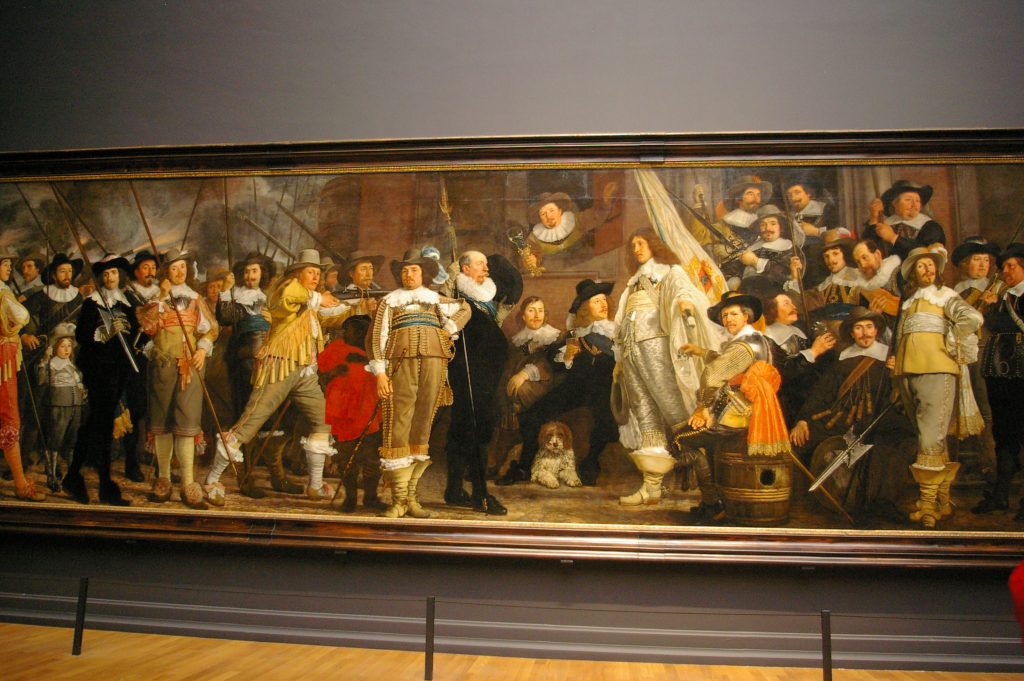 The Van Gogh Museum is only a short walk or even shorter pedal ride from the Rijksmuseum. Everybody knows Van Gogh but do they really understand the person and his constant struggles with depression and psychiatric issues? Well this is definitely the place to learn all about the great man. It is home to a stunning collection of his paintings, drawings and letters which paint a vivid picture of his life and work. Top works on display include, Sunflowers, The Bedroom, The Yellow House and a unique selection of self-portraits, all housed in stunningly modern and contemporary surroundings
The Van Gogh Museum is only a short walk or even shorter pedal ride from the Rijksmuseum. Everybody knows Van Gogh but do they really understand the person and his constant struggles with depression and psychiatric issues? Well this is definitely the place to learn all about the great man. It is home to a stunning collection of his paintings, drawings and letters which paint a vivid picture of his life and work. Top works on display include, Sunflowers, The Bedroom, The Yellow House and a unique selection of self-portraits, all housed in stunningly modern and contemporary surroundings
The city comes alive at night; it takes on a very different personality. That evening we explored the delights of the Red Light District. What an experience, not so much seedy but a slightly uncomfortable atmosphere followed us as we wandered through the bustling streets. The air clogged with a heady mix of testosterone and cannabis, like a rather surreal Bisto trail. The interactions were good natured and at no stage did we feel unsafe or in any danger.
The next morning I pedalled to the nearby floating flower market on the banks of the Singel and then onto Anne Frank’s Huis. The weather was again behaving with the traffic not as compliant. The floating flower market was splashed with early morning sunshine and is believed to be the only one if its kind in the world. The small shops are located inside a row of floating barges – a holdover from the days when flowers arrived in Amsterdam every day from the countryside by boat. The fragrance and aromas overwhelmed my senses, the colours were breathtaking. On display are plenty of fresh bunches, as expected tulips dominated but there was also a mix of bulbs and seeds (including cannabis). The bulbs are ready for export, so you can enjoy them at home too. In December the market also sells the ubiquitous Christmas tree and a large selection of festive decorations.
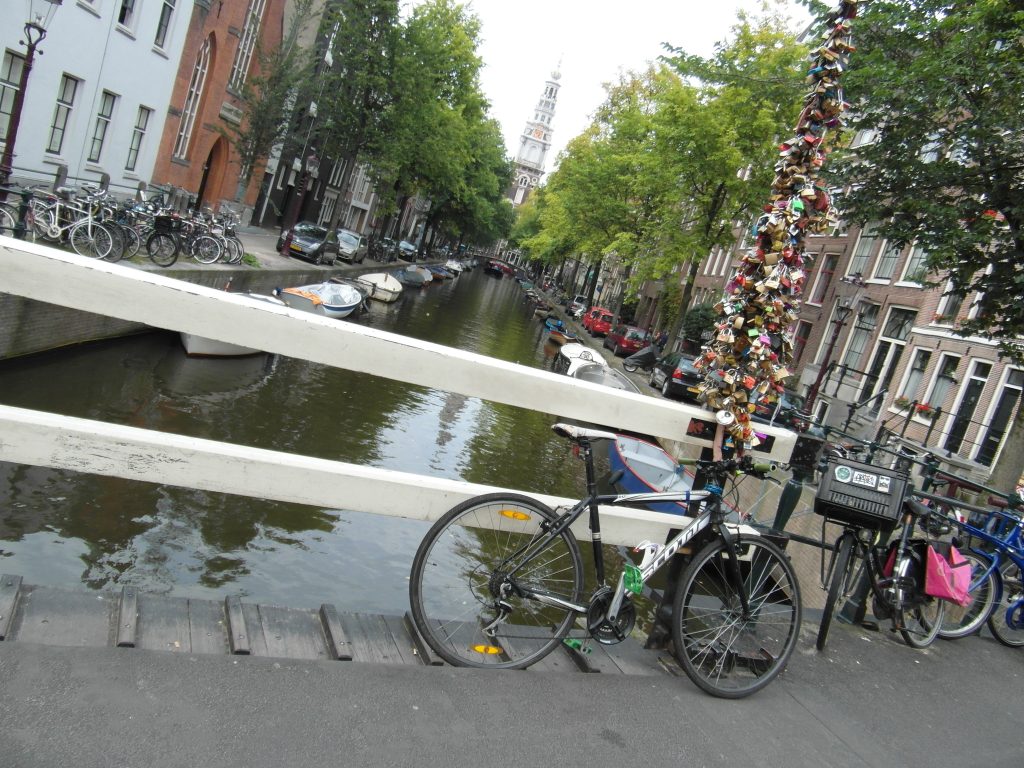 I continued onwards, negotiating the busy and rather tricky Dam Square enroute to the most famous canal house in the City. It’s a perfect location to people watch, but rather pricey. Several tram lines traverse and converge in the city’s main square with passengers boarding and alighting like a human conveyor belt. After weaving through the masses, I arrived outside the rather modern façade of Anne Franks Huis. For more than two years Anne and her family lived in the annex of the building at Prinsengracht 263 where Anne’s father, Otto Frank, also had his business. It was strange and emotional to walk through the doorway to the annex that was concealed behind a moveable bookcase constructed especially for this purpose. On August 4, 1944, the hiding place was betrayed. The people in hiding were deported to various concentration camps. Only Otto Frank survived the war and arranged for Anne’s inspirational words to be published as a book. Nowadays, the rooms within the property, though empty, still breathe the atmosphere of that period of time, slightly eerie. Quotations from the diary, historical documents, photographs, film images, and original objects that belonged to those in hiding and the helpers illustrate the events that took place here and allow you to contemplate the horrors of war and how it impacts on real people’s lives. During her time in hiding, Anne’s wrote a diary, developing into a talented writer and the original diary and other notebooks are on display in the museum. The whole experience is very moving and tastefully presented and made me so thankful for my life in relative freedom. I would highly recommend a visit especially if you want to see a different more refined and less frenetic side to the city.
I continued onwards, negotiating the busy and rather tricky Dam Square enroute to the most famous canal house in the City. It’s a perfect location to people watch, but rather pricey. Several tram lines traverse and converge in the city’s main square with passengers boarding and alighting like a human conveyor belt. After weaving through the masses, I arrived outside the rather modern façade of Anne Franks Huis. For more than two years Anne and her family lived in the annex of the building at Prinsengracht 263 where Anne’s father, Otto Frank, also had his business. It was strange and emotional to walk through the doorway to the annex that was concealed behind a moveable bookcase constructed especially for this purpose. On August 4, 1944, the hiding place was betrayed. The people in hiding were deported to various concentration camps. Only Otto Frank survived the war and arranged for Anne’s inspirational words to be published as a book. Nowadays, the rooms within the property, though empty, still breathe the atmosphere of that period of time, slightly eerie. Quotations from the diary, historical documents, photographs, film images, and original objects that belonged to those in hiding and the helpers illustrate the events that took place here and allow you to contemplate the horrors of war and how it impacts on real people’s lives. During her time in hiding, Anne’s wrote a diary, developing into a talented writer and the original diary and other notebooks are on display in the museum. The whole experience is very moving and tastefully presented and made me so thankful for my life in relative freedom. I would highly recommend a visit especially if you want to see a different more refined and less frenetic side to the city.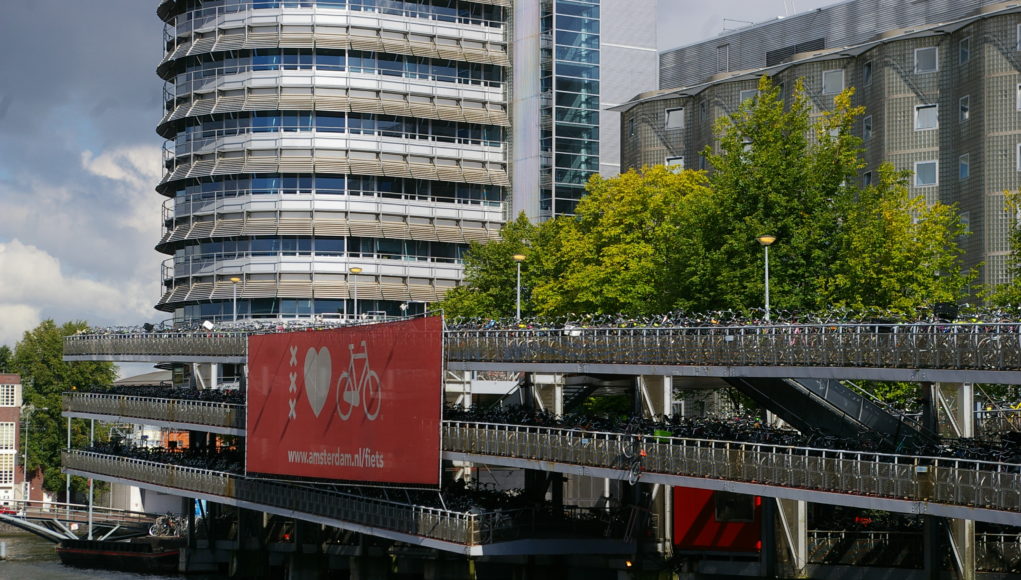
My final destination of the day was the Centraal Station, the main focal and arrival point for most travellers to the city. As I approached I was astonished by the mega cycle-racks on the western side of the ornate train station. It is built in the water, in front of the Ibis hotel. The Fietsflat (translates as bicycle building) was built in 2001 and can accommodate 2,500 bikes on three levels. Centraal Station is definitely the beating heart of the city, it accommodates over 250,000 people each day and is the hub for the transport network with several tram and bus lines converging outside. The impressive Neo-Renaissance façade is stunning and has been open to the public since 1889. The main tourist office is opposite housed in a traditional wooden white Dutch house, It is open daily between 9am – 6pm and is where you can purchase the iAmsterdam card and as well as offering a wide variety services especially city maps.
Amsterdam is the one place on the planet where fear-mongering about cycling is non-existent and it shows. With the city dominated by bikes and a self-confident assurance from the riders, instrumental in this laidback attitude is the widespread 30 km/h zones and the tight narrow streets which can only create a slowing of the traffic. There are few places I have enjoyed urban cycling as much as in Amsterdam, I challenge anybody to stand on the corner of any busy intersection and not see a bike or bikes, they are absolutely everywhere. The City’s definite major attraction is its individuality. The vision for the future of Amsterdam is prefectly highlighted by Michel Post from the Fietserbonds (the Dutch Cyclists’ Union that campaigns for better cycling conditions in the Netherlands). The city’s car traffic will decrease to the point where there won’t be a need for cycle lanes at all, as bicycles move off the curb and claim the streets. “Cars will consider themselves guests,” he says, elevating Amsterdam’s status as the world’s biking Capital to new heights.
Twitter: cadencemag
Website: cadencemag.co.uk
Author, ‘Simple Words from the Saddle, Simply More Words from the Saddle & The Way of St James’
Twitter: @saddlescot











